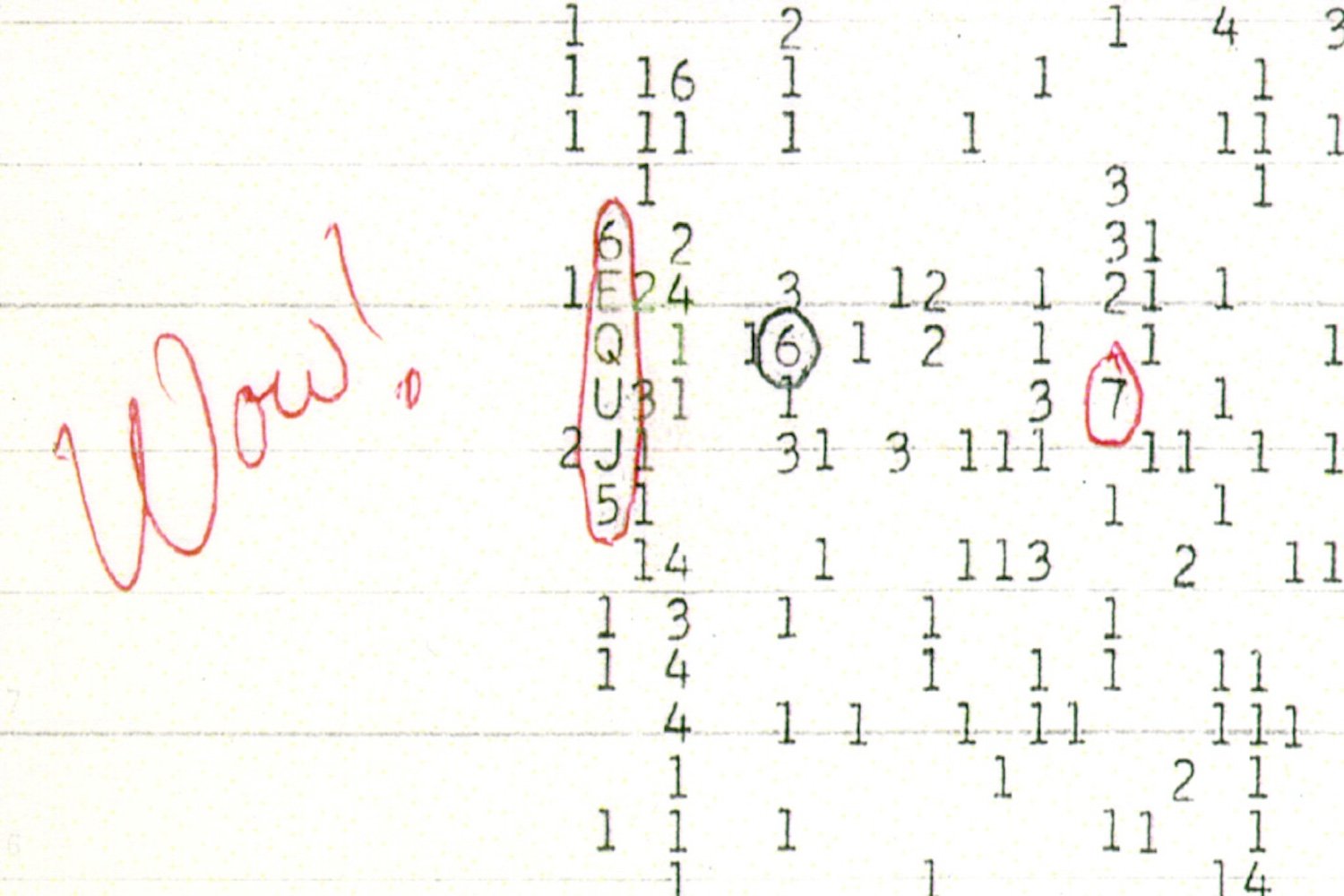On August 15, 1977, the Big Ear observatory in Ohio picked up an unusually intense radio signal. The signal was so unique that it prompted astronomer Jerry Ehman to draw a red circle around it and scribble the word ‘Wow!’ to highlight his amazement. Since then, the Wow! signal, as it came to be known, has puzzled scientists who were unable to pinpoint its source. However, a new project dedicated to solving the mystery of the signal may have had a breakthrough.
Using archived data from the former Arecibo Observatory in Puerto Rico, the Arecibo Wow! (AWOW) project uncovered similar data that suggest the 47-year-old radio signal was the result of a rare event that caused a massive cloud of hydrogen to shine super brightly. A paper describing the results will soon be submitted for peer review with a scientific journal, the team’s project page states.
Abel Méndez, associate professor of physics and astrobiology at the University of Puerto Rico, who led the study, admits that he only began diving deep into the Wow! signal earlier this year. “I have to confess, the Wow! signal for me, and for many astronomers, was something like a fluke,” he told Gizmodo. “So I never really paid attention to it.”
For years, Méndez has been researching habitability across the universe by observing stars and the planets that orbit them. In May, he stumbled upon a video explaining the Wow! signal, and it got him hooked. “I thought, well that would be something amazing to find in our data,” Méndez said.
The Wow! signal garnered so much attention because of how relatively small its bandwidth was while lasting for 72 seconds of unusual intensity (it had a narrow bandwidth near the 1420 MHz hydrogen line). For it to have this narrow of a frequency but still be this strong and pack this much energy suggested that it was an artificial signal. This obviously sparked alien rumors, with some believing the transmission was sent by an extraterrestrial civilization.
The researchers behind the AWOW project wanted to see if another, similar signal could be found, so they looked over data gathered by the Arecibo telescope from 2017 to 2020. They found similar narrowband signals near the hydrogen line, though less intense than the original Wow! recording.
The Wow! signal wannabes were a result of interstellar clouds of cold hydrogen (HI) in the galaxy, although they were two orders of magnitude less bright. Méndez and his team believe that, for the Wow! signal to be so bright, it may have been caused by a sudden brightening due to a transient source of radiation such as a magnetar. A magnetar is a type of neutron star with extremely strong magnetic fields, and it could excite the atoms in the hydrogen clouds to produce a sudden brightening.
“That’s rare,” Méndez said. “What’s the chance of a magnetar being right behind one of those clouds, and have strong enough radiation to excite that cloud, and for someone to be looking in that direction at the same time?”
Méndez and his team will run follow-up observations using the Very Large Telescope in Chile to identify the exact clouds behind the signals found in the archived data. The astrobiologist is determined to learn more about his newfound obsession. “I learned so much about the Wow! signal in the last few months compared to my whole life,” he said.
More: Mysterious Wow! Signal Came from Comets, Not Aliens, Claims Scientists








Leave a Reply